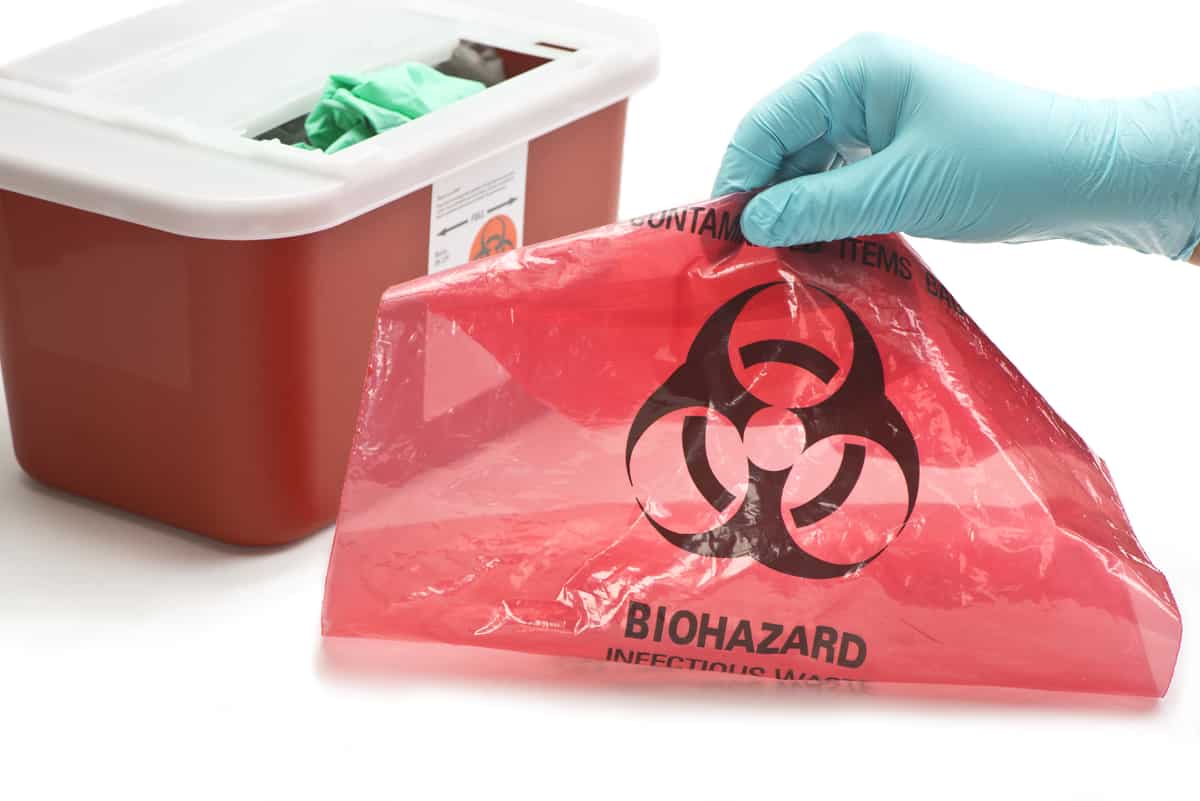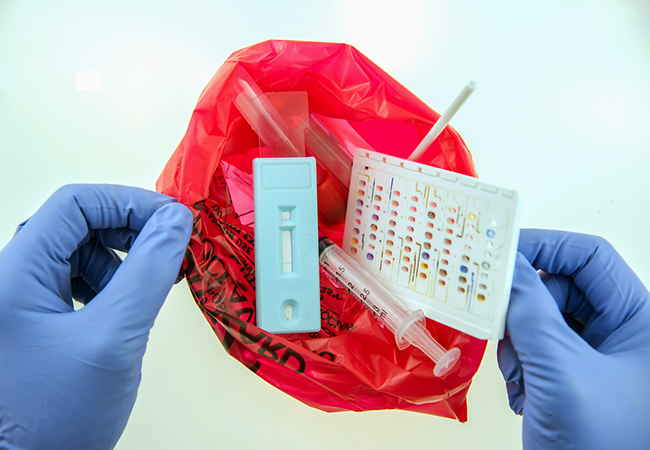Your Trusted Companion: Medical Waste Removal Services Tailored to Your Requirements
Wiki Article
The Value of Proper Clinical Garbage Disposal: A Guide for Healthcare Facilities
Correct clinical waste disposal is a crucial aspect of healthcare facility management, making sure the safety and security and wellness of people, staff, and the atmosphere. From comprehending the different categories of medical waste to complying with regulatory requirements, healthcare facilities must embrace effective waste partition techniques and select appropriate disposal techniques.Recognizing Clinical Waste Categories
Recognizing clinical waste categories is vital for proper disposal in healthcare centers. Medical waste is a wide term that includes various kinds of waste generated in health care settings, such as healthcare facilities, centers, and labs. Classifying medical waste assists make sure that it is taken care of, kept, and disposed of safely and in accordance with appropriate regulations.There are a number of classifications of clinical waste that medical care facilities need to be conscious of. These categories include infectious waste, sharps waste, pharmaceutical waste, chemical waste, and radioactive waste (medical waste disposal services with WasteX). Each category has particular attributes and needs different disposal approaches to reduce the threat of damage to health care employees, people, and the atmosphere
Contagious waste, for instance, refers to squander polluted with potentially transmittable products, such as blood, body fluids, and cells. Pharmaceutical waste is composed of ended or unused drugs, while chemical waste is composed of harmful chemicals utilized in clinical treatments.
Conformity With Regulatory Demands
Healthcare centers need to make sure conformity with regulatory requirements for proper clinical garbage disposal. Regulative bodies, such as the Epa (EPA) and the Occupational Safety And Security and Wellness Management (OSHA), have established policies and standards to protect public wellness and the atmosphere. These guidelines detail the correct handling, storage space, transportation, and disposal of clinical waste.Compliance with regulative needs is important for healthcare centers to stay clear of legal charges, reputational damages, and prospective harm to human health and the atmosphere. Failing to abide by these regulations can cause penalties, suits, and even the suspension or revocation of operating licenses.
To make certain compliance, medical care facilities need to develop comprehensive waste monitoring programs that consist of team training, correct waste partition, and making use of proper containers and tags. Normal audits and assessments need to likewise be conducted to identify any non-compliance concerns and address them without delay.
It is necessary for health care facilities to stay up to day with changes in regulations and upgrade their waste administration techniques appropriately. This can be achieved by actively checking updates from regulatory bodies and joining training programs and workshops.
Applying Reliable Waste Segregation Practices
To make certain appropriate clinical garbage disposal, health care centers should execute reliable waste partition practices. Waste partition is an essential action in the general waste administration process, as it aids decrease the risk of infection, stops cross-contamination, and makes certain the secure disposal of different kinds of waste. Efficient waste segregation techniques include separating clinical waste into different categories based upon its characteristics and possible risks.One typical practice is the segregation of sharps waste, such as scalpels and needles, from other types of clinical waste. Sharps waste ought to be placed in puncture-resistant containers to stop injuries and potential infections. In addition, contaminated materials, such as chemicals and drugs, ought to be separated from general clinical waste to stop ecological contamination.
Appropriate labeling and color-coding of waste containers are necessary for reliable waste segregation. Clear and visible labels need to be put on each container to show the sort of waste it contains and any type of unique handling needs - medical waste disposal services with WasteX. Furthermore, color-coding can be made use of to differentiate in between different waste classifications, making it easier for healthcare personnel to identify and get rid of of waste properly
Regular training and education for medical care staff is crucial for the successful execution of waste partition techniques. Employee must be educated on the different waste groups, proper partition techniques, and the significance of following waste administration protocols. This will assist make sure compliance and consistency in waste segregation practices throughout the center.
Choosing Appropriate Disposal Methods
Proper option of appropriate disposal techniques is crucial in ensuring the secure and eco responsible management of clinical waste in health care centers. Medical care facilities this website produce a selection of clinical waste, consisting of sharps, transmittable waste, pharmaceutical waste, and chemical waste - medical waste removal service. Each kind of waste requires specific disposal techniques to lessen the you can look here risk of contamination, injury, and ecological damageOne common disposal approach for medical waste is incineration. Incineration entails the regulated burning of waste at high temperatures. This method is reliable in destroying virus and lowering the quantity of waste. It can launch dangerous pollutants right into the air if not properly managed.

Chemical sanitation is another technique utilized for sure kinds of medical waste, such as pharmaceutical waste. This method uses chemicals to reduce the effects of or destroy pollutants. However, it is very important to choose chemicals that are ecologically friendly and secure.
In some cases, landfill disposal might appropriate for non-hazardous clinical waste (medical waste disposal services with WasteX). Proper partition and product packaging are vital to avoid leak or contamination.
Inevitably, medical care centers need to very carefully review the characteristics of their medical waste and pick ideal disposal methods that prioritize safety, environmental management, and regulative compliance. Normal training and tracking are vital to ensure that medical care team adheres to appropriate disposal procedures.

Training and Educating Staff on Correct Disposal Procedures
Team education and learning and training play a critical role in making certain the appropriate disposal of clinical waste in medical care centers. It is essential that all staff members, consisting of medical professionals, registered nurses, service technicians, and support staff, receive thorough training on correct disposal procedures. This Recommended Reading training needs to cover the different types of medical waste, their potential threats, and the suitable methods for taking care of, segregating, and throwing away them.Among the primary objectives of staff education and training is to guarantee that all health care professionals comprehend the value of appropriate disposal procedures and the prospective consequences of improper waste administration. They need to be familiar with the dangers linked with medical waste, such as the transmission of infections and the contamination of the atmosphere. medical waste removal services. By recognizing these threats, personnel participants will certainly be much more determined to adhere to appropriate disposal methods and take the required safety measures to shield themselves, their associates, and the neighborhood
Training must additionally cover using personal protective equipment (PPE) and the proper techniques for handling clinical waste. Team member must be informed on exactly how to determine and segregate different sorts of waste, such as sharps, contagious waste, and unsafe chemicals. They should also be trained on the proper use waste containers, such as sharps containers and biohazard bags, along with the relevance of labeling and sealing these containers correctly.
In addition, personnel education and training should include normal updates and refresher programs to make sure that health care experts remain informed regarding the most recent guidelines and best methods in clinical waste disposal. This continuous education and learning is crucial to keep a high level of recognition and conformity among personnel.
Final Thought
In verdict, correct medical waste disposal is of utmost significance for medical care facilities. Understanding the different classifications of clinical waste and complying with governing demands ensures the security and wellness of both health care workers and the general public.From understanding the various classifications of clinical waste to conforming with governing demands, health care centers should adopt efficient waste segregation techniques and choose suitable disposal methods. These groups consist of contagious waste, sharps waste, pharmaceutical waste, chemical waste, and contaminated waste.To guarantee proper clinical waste disposal, health care centers must execute effective waste partition techniques. Waste partition is an important step in the overall waste management process, as it aids minimize the threat of infection, prevents cross-contamination, and ensures the risk-free disposal of different types of waste. Medical care centers create a selection of clinical waste, including sharps, contagious waste, pharmaceutical waste, and chemical waste.
Report this wiki page